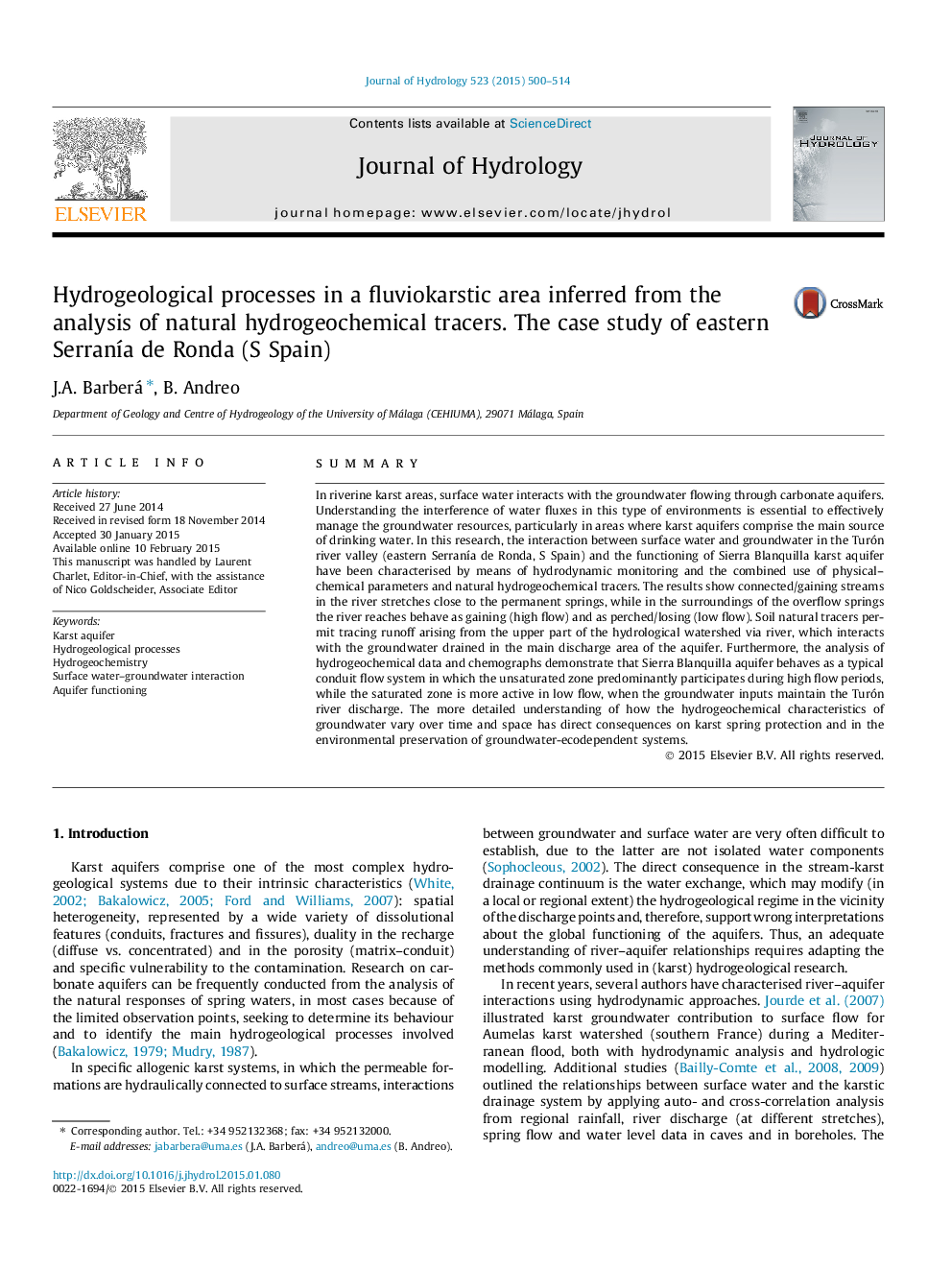| کد مقاله | کد نشریه | سال انتشار | مقاله انگلیسی | نسخه تمام متن |
|---|---|---|---|---|
| 6411735 | 1629927 | 2015 | 15 صفحه PDF | دانلود رایگان |

- Hydrogeological processes occurring in a fluviokarstic area have been characterised.
- Hydrochemical tracing permitted the evaluation of the aquifer-river interactions.
- The role of the aquifer zones contributing to the springs flow were investigated.
- The combined use of research methods enhances their applicability.
- Previous issues are crucial for the management and protection of karst groundwater.
SummaryIn riverine karst areas, surface water interacts with the groundwater flowing through carbonate aquifers. Understanding the interference of water fluxes in this type of environments is essential to effectively manage the groundwater resources, particularly in areas where karst aquifers comprise the main source of drinking water. In this research, the interaction between surface water and groundwater in the Turón river valley (eastern SerranÃa de Ronda, S Spain) and the functioning of Sierra Blanquilla karst aquifer have been characterised by means of hydrodynamic monitoring and the combined use of physical-chemical parameters and natural hydrogeochemical tracers. The results show connected/gaining streams in the river stretches close to the permanent springs, while in the surroundings of the overflow springs the river reaches behave as gaining (high flow) and as perched/losing (low flow). Soil natural tracers permit tracing runoff arising from the upper part of the hydrological watershed via river, which interacts with the groundwater drained in the main discharge area of the aquifer. Furthermore, the analysis of hydrogeochemical data and chemographs demonstrate that Sierra Blanquilla aquifer behaves as a typical conduit flow system in which the unsaturated zone predominantly participates during high flow periods, while the saturated zone is more active in low flow, when the groundwater inputs maintain the Turón river discharge. The more detailed understanding of how the hydrogeochemical characteristics of groundwater vary over time and space has direct consequences on karst spring protection and in the environmental preservation of groundwater-ecodependent systems.
Journal: Journal of Hydrology - Volume 523, April 2015, Pages 500-514